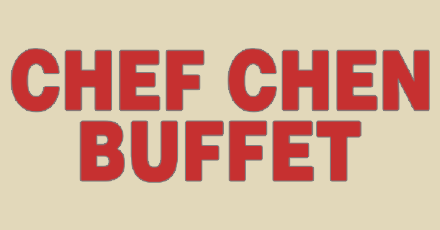

The most expensive course, for example, gets you a "whole" shark fin. Other set courses go heavier on the shark fin. Soft, smooth, and a fishy-without-being-too-fishy taste.

This one had almost zero shark fin and a ton of soft cod roe, which was fine by me because it was the highlight of the dish. Next we had "crab and shark fin soup with soft cod roe." Morally, I'm against shark fin soup, but all set meals came with it. It was okay, but a little bland for what we expected from Szechuan-style food (spicy, bright, and with a lot of peppers). The first item on the menu is the "appetizer." It turns out, this was several things, including some fried fish, lobster, and more. This course "consists of meals that have various flavors and smells that only the Szechuan cuisine can express, and also lets you enjoy the umami of Japanese ingredients."
#Chef chen restaurant windows
The chefs-who you can see when they defrost the windows at 7:00 p.m.-got to work on our food.Īre you ready to eat along with us? I'll take you through each course item, and then reveal the verdict and price at the end. Choosing the middle-priced course was something we tried to keep consistent throughout our Tokyo Iron Chef Restaurant Battle Royale.Īccording to a Facebook post, this course "consists of meals that have various flavors and smells that only the Szechuan cuisine can express, and also lets you enjoy the umami of Japanese ingredients."Īfter ordering some Chinese liquor-based highballs, we put in our food order. We chose the middle-priced Seito Course, and various optional items. As with all the Iron Chef restaurants we went to, there were a few options for set meals. We were seated in typical fancy-restaurant fashion (very courteously) and given two menus: one Chinese/Japanese and one Japanese/English. Showing off achievements is either a good or a bad sign-we weren't sure which yet, but this is an Iron Chef we're talking about! It's going to be award-worthy, right?

Inside are various things, but the first thing they want you to notice is the awards. On your left as you enter is a wall of display cases. We were the only people there at the time, though it steadily got busier as the hours went by. Our reservation was early, something like 5:30 p.m. The whole building and the restaurant itself had a fancy vibe. To get there, we took a train to Shibuya Station, then walked to the (somewhat) nearby Cerulean Tower, where Szechuan Restaurant Chin awaited us on the second floor. We were, of course, very much looking forward to it. It was the first of four that are a part of the "Szechuan Restaurant Chin Group." Their goal is to help customers enjoy "full-fledged Szechuan cuisine," and they try to "offer dishes that use seasonal ingredients from different genres with Szechuan's various seasonings." The particular restaurant we went to opened in 2001.

Cooking without love is no good.) It's no wonder his son became an Iron Chef, carrying his father's torch (though originally, he wanted to be a baseball player). He later opened a couple other restaurants, and is known to be the person who popularized Szechuan cuisine in Japan. His father, Chen Kenmin, opened the first Szechuan restaurant in Nishi-Shinbashi, Tokyo, in 1958 (though it's now closed). Cooking without love is no good.īut all this cooking didn't actually start with Kenichi-san. He always seemed like he was having fun, and he made a lot of mabodōfu ( some things never change). We both had grown up watching Iron Chef almost religiously, and Chin-with a record of sixty-six wins, three ties, and a win percentage of 72.6%-was one of our favorites.
#Chef chen restaurant series
Viet and I had high hopes for Chin Kenichi (Chen Kenichi, in the US), the only Iron Chef from the original series that battled through all six years and 309 episodes. Come back and see new Iron Chef restaurant reviews, and (coming soon) a final ranking of them all! This article is part of a series where the Tofugu team visits Iron Chef restaurants, pitting them against each other in some kind of Iron Chef sequel.


 0 kommentar(er)
0 kommentar(er)
